

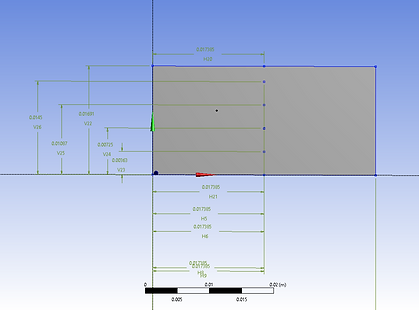
Finite Element Techniques
The first project of a two project series represents an investigation into the finite element model of a stressed plate containing a hole. The report will present a mesh refinement study, accompanied by a discussion of different element shapes and number of isoparametric elements. Consideration is also given to stress concentration factors and an engineering assessment of the component’s resistance to fatigue for 107 cycles. The second project looks into various finite element models of a plate undergoing a bending test. The aim of this study is to produce a finite element model using hand calculations and compare the results with the solution given by the commercial ANSYS package as well as with experimental results obtained through Digital Image Correlation. Firstly, all assumptions used in the project are presented, followed by the hand derivation of the stiffness matrix of a rectangular element with only one Gauss point. Then, the displacement and strain distribution are obtained through hand calculations, as well as by using ANSYS, and the obtained results are compared with experimental data.
Investigation of Various Advanced Fluid Mechanics Techniques
During an Advanced Fluid Mechanics module taken in university, I worked on two projects analyzing different concepts and techniques relating to complex fluid flows. The first project was an investigation into the flow of air around a sphere of radius 𝑅 travelling at speed 𝑈 in an incompressible viscous fluid while rotating at a constant speed 𝜔 around the z-axis. This project looked at identifying the simplified governing differential fluid flow equations and boundary conditions, the stream functions and pressure distributions, and the normal and shear strain rates. The second project analyzed different mathematical models for turbulent airflow characteristics for a flat-plate Blasius boundary layer problem, the aerodynamic flow around a commercial airplane in cruise conditions and the cold flow and mixing process in a combustion furnace using methane.
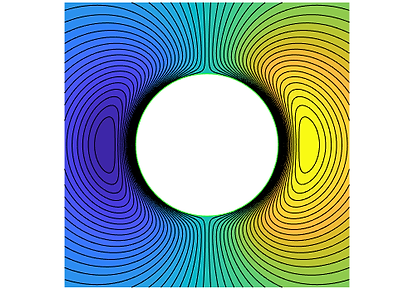


Siemens - Safety Aspects of Hydrogen Combustion Testing
Working in a 6 student team, part of the Aerospace Propulsion Industrial Training Programme at the University of Sheffield, looking at the safety aspects of hydrogen combustion testing. Part of our work, we are reviewing the combustor test rig at the Siemens Low Carbon Combustion Centre (LCCC), designing the whole fuel supply system and reviewing the current safety practices relating to hydrogen trailers at Lincoln, giving design on potential improvements.
Aerodynamic Design of a High Endurance Surveillance UAV
Understanding the aerodynamic forces acting on a UAV is crucial in order to obtain the desired platform performance. Initially, the conceptual design of the wing, empennage and control surfaces was created, followed by preliminary calculations using empirical formulas and the matching plot technique. A preliminary aerofoil shape was identified using drag polar plots generated with XFOIL 6.99, followed by calculations determining the aerodynamic coefficients, thrust and power requirements for the UAV. These calculations were validated using 2D CFD (Ansys ICEM-CFD, Fluent and CFD-Post) and data obtained from literature. The wing lift distribution was estimated using the lifting line theory and validated through 3D CFD (SimScale CFD). The control surfaces were designed using an empirical equations and information available in literature.
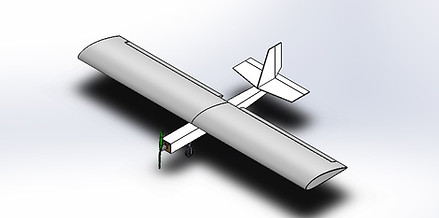


Analysis of the Static and Dynamic Stability of a Jetstream 31 Aircraft
Following the completion of the Cranfield University Flight Laboratory Course, an investigation was performed into the static and dynamic stability of a Jestream 31 aircraft using data collected during multiple flights. The longitudinal static stability, longitudinal manoeuvre stability and aircraft dynamic modes (short period oscillation, Phugoid oscillations, Dutch roll mode, subsidence mode and spiral mode) were analysed and the discussed.
Numerical Investigation of the Turbulent Flow Over a Backward Facing Step
A two part investigation was performed into turbulent flows over a backward facing step. The first part of the investigation analysed the governing physics of the turbulent flow, derived a RANS-based mathematical model, set the domain dimensions and the boundary conditions. The second part of the study was concerned with setting up the solver (Fluent) and selecting the discretization algorithms. Two sets of results were obtained for two different turbulence models (RKE and RNG) which were compared with literature experimental and numerical data.


MDOF Vibration Analysis of a Steam Turbine Blade
An analysis was performed in the modal properties of a steam turbine blade. Two datasets containing force impulses and blade accelerations were initially obtained through lab-based tap tests. A complex MATLAB code was then developed, which identified and compared the frequency response functions (FRFs), natural frequencies, damping rations and mode shapes of the two datasets. The results were subsequently discussed in a report.
Aerodynamic Design of a NACA 4-Digit Airfoil for a Morphing Wing MAV
An aerodynamic investigation was conducted in order to determine two aerofoil solutions for cruise and loiter conditions for a morphing wing MAV. A numerical analysis was carried out using XFOIL 6.99 in order to determine the aerofoils with the minimum drag profiles and to analyse the separation bubbles occurring due to low Re-number flight.
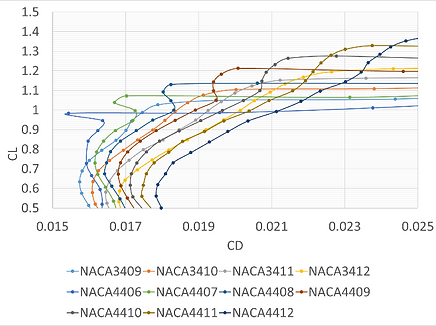
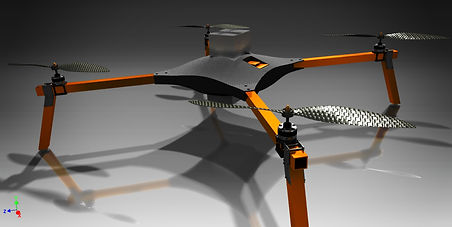
Designing of the Propulsion System for a Heavy-Lifting Quadcopter UAS
Different types of brushless motors and propellers were analysed and assessed using a self-developed MATLAB code, in order to determine the best solution for the propulsion system of a heavy-lifting autonomous UAS quadcopter. During the manufacturing process at the University of Sheffield Composite Systems Innovation Centre, work was done with electrical-curing (e-curing) techniques for large and complex carbon fibre structures serving as the UAV’s fuselage, arms and legs.
